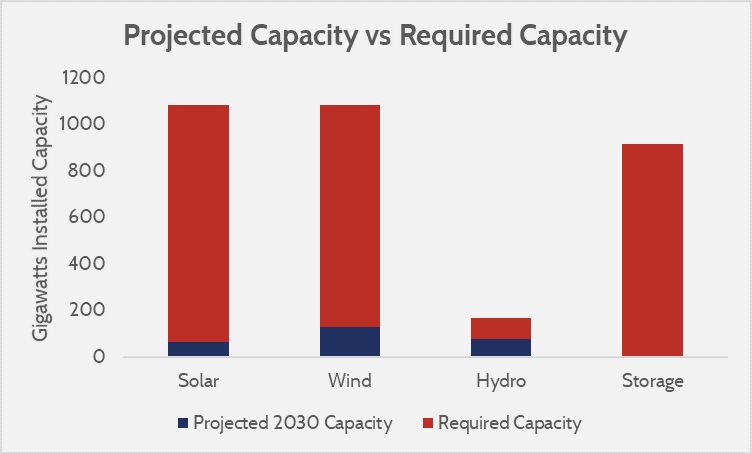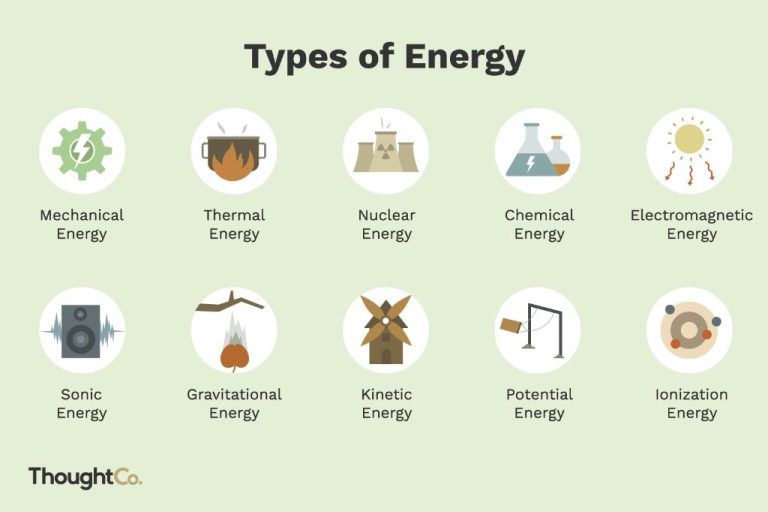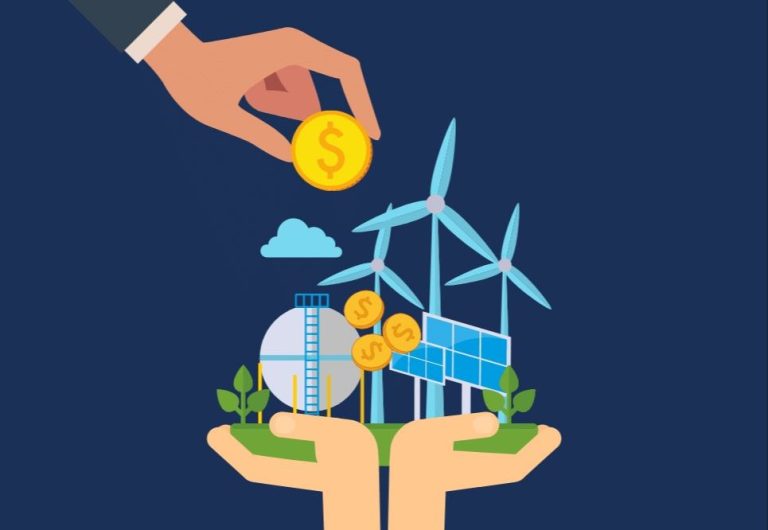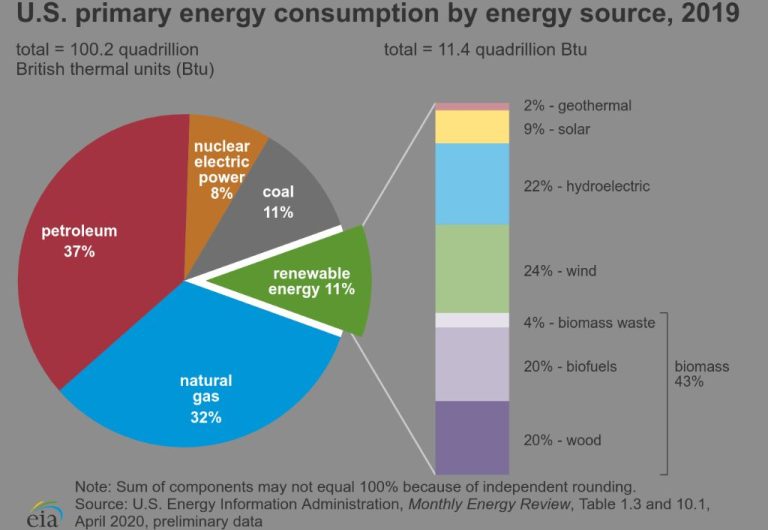Are Fossil Fuels Renewable?
What are fossil fuels?

Fossil fuels are energy resources formed from the remains of ancient plants and organisms that lived millions of years ago. Over time, the remains of these organisms were buried underground and subjected to intense heat and pressure, transforming them into concentrated stores of carbon-based energy.
The three main types of fossil fuels are:
- Coal – Formed from the remains of trees, ferns, algae, and other plant material. Coal is a solid fossil fuel and is the most abundant fossil fuel on Earth.
- Oil – Formed from the remains of tiny marine organisms like plankton and algae. Oil is a liquid fossil fuel that is found underground in reservoirs and extracted via drilling.
- Natural gas – Formed from plant and animal remains. Natural gas is a gaseous fossil fuel that is often found with deposits of petroleum.
Fossil fuels like coal, oil, and natural gas supply the majority of the world’s energy demand and are non-renewable, meaning reserves are limited and cannot be replenished on a human timescale.
How fossil fuels are formed
Fossil fuels like coal, oil, and natural gas are formed from the remains of ancient plants and animals that lived hundreds of millions of years ago. When these organisms died, they sank to the bottom of seas and swamps where they were buried under layers of sediment over long periods of time.
The heat and pressure from being buried deep underground changed the organic matter into fossil fuels over millions of years. This process is known as fossilization. For example, when plankton and algae were buried, they were transformed into oil and natural gas. The fossilized remains of land plants became coal.
The specific conditions needed for fossil fuels to form include:
- An abundance of living organisms such as phytoplankton, zooplankton, algae, plants, and animals.
- Sediments such as mud and silt that bury the organic matter.
- Anaerobic conditions without oxygen present.
- High pressure and heat which transform the organic material over time.
This long process which takes millions of years under very specific conditions is why fossil fuels are considered nonrenewable – they take far longer to form than the rate at which we extract and use them. (Source)
Why fossil fuels are considered non-renewable
Fossil fuels like coal, oil, and natural gas are considered non-renewable resources because they take an extremely long time to form, while we are extracting and consuming them at a much faster rate.
The process of fossil fuel formation takes millions of years. It begins when ancient plants and animals are buried by sediment. Over time, heat and pressure convert their organic matter into materials like coal, oil, and natural gas [1].
In comparison, humanity’s extraction and consumption of fossil fuels is happening at a much more rapid pace. We are using fossil fuels far quicker than they can naturally replenish. At current rates of consumption, global fossil fuel reserves are being depleted much faster than new ones are being created [2].
This vast difference in formation time versus extraction time is why fossil fuels are considered non-renewable. They cannot be replenished at the rate they are being used up.
Current global fossil fuel reserves
According to data from Our World in Data, current proved global fossil fuel reserves as of 2020 are estimated at:
- Coal – 1,070 billion tonnes, equal to 139 years of future production at current rates (source)
- Oil – 240 billion tonnes, equal to around 57 years of future production (source)
- Natural gas – 187 trillion cubic metres, equal to around 49 years of future production (source)
These reserve estimates refer to proved or demonstrated reserves that are economically feasible to extract with current technology and under present economic conditions. The actual amounts in the ground may be higher, but not all potential fossil fuel resources can be classified as reserves.
Rate of fossil fuel extraction and consumption
According to data from Our World in Data, global fossil fuel consumption has increased dramatically over the past century. In 1900, the world consumed about 290 million tonnes of oil equivalent (Mtoe) from coal, oil, and natural gas. By 1950, consumption had risen to 1,250 Mtoe. In 2019, total global fossil fuel consumption reached 14,656 Mtoe. This represents a 5,000% increase since 1900.
Oil and gas have seen particularly rapid growth. In 1900, oil and gas accounted for just 10% of global fossil fuel consumption. By 2019, that share had risen to 57%. The growth of oil has been especially pronounced, rising from just 20 million tonnes consumed in 1900 to over 4 billion tonnes in 2019, a 19,900% increase.
In terms of fossil fuel production, global coal production grew from about 600 million tonnes in 1900 to over 8 billion tonnes by 2018. Oil production surged from 20 million tonnes in 1900 to 4.5 billion tonnes in 2018. Natural gas output rose from 10 billion cubic meters in 1900 to over 4,100 billion cubic meters in 2018.
While growth in fossil fuel consumption has slowed somewhat in developed countries, rapid industrialization in emerging economies has driven continued growth in global demand. Fossil fuels still supply 84% of global primary energy needs as of 2019.
(Source: https://ourworldindata.org/fossil-fuels)
Impact of continued fossil fuel use
The continued extraction and burning of fossil fuels like coal, oil, and natural gas is having significant detrimental impacts on the environment and climate. Burning fossil fuels releases greenhouse gases like carbon dioxide and methane into the atmosphere. These greenhouse gases trap heat, causing the planet to warm over time.
Since the Industrial Revolution began in the 1800s, the burning of fossil fuels has increased global average temperatures by 1°C. Much of this warming has occurred in the last few decades as countries continue to rely heavily on fossil fuels for energy. If fossil fuel use continues at current levels, scientists project average global temperatures could increase by 3-5°C by 2100 compared to pre-industrial levels.
This rapid warming is already leading to melting ice sheets, rising sea levels, more extreme weather events like hurricanes and heatwaves, disruption of ecosystems, and mass extinction of species. Climate change threatens water and food security for hundreds of millions of people around the world. Low-lying coastal cities and island nations are at risk of becoming uninhabitable.
Beyond climate impacts, extracting and burning fossil fuels also causes extensive air and water pollution. Fossil fuel extraction releases toxic chemicals and gases that contaminate local air and water. Burning fossil fuels, especially coal, produces pollutants like sulfur dioxide, nitrogen oxides, particulate matter, and mercury that reduce air quality and harm human health.
The continued use of fossil fuels poses an existential threat to the environment and humanity. Phasing out fossil fuel use in favor of renewable energy is critical to mitigating the worst impacts of climate change and building a sustainable future.
Efforts to transition to renewable energy
As concerns grow over the environmental impacts of burning fossil fuels, there has been a major global push to transition to renewable energy sources like solar, wind, geothermal, and hydropower. According to the International Energy Agency (IEA), renewable energy sources are expected to account for over 90% of the growth in global power capacity through 2026.
Many countries have implemented policies and initiatives to increase renewable energy production and use. For example, the European Union aims to generate 32% of its energy from renewables by 2030. China is investing billions into solar, wind, and hydropower projects. Major corporations like Google, Apple, and Amazon have pledged to power their operations entirely with clean energy. Even oil companies like BP and Shell are diversifying into renewables as demand grows.
While great progress has been made, renewable energy faces challenges around intermittency, storage, and transmission. However, continued technology improvements and falling costs are making renewables more viable globally. With the right policies and investments, renewable energy can play a major role in reducing fossil fuel dependence and greenhouse gas emissions worldwide.
Challenges of transitioning from fossil fuels
Transitioning the global energy system away from fossil fuels poses numerous political, economic, and technological challenges. Fossil fuels like oil, coal, and natural gas currently account for over 80% of global energy use. This dependence took over a century to develop as economies grew reliant on the unique affordability and energy density of fossil fuels.
Politically, many fossil fuel-producing regions depend heavily on oil and gas revenue to fund government budgets and public services. Phasing out fossil fuel production threatens economic and political instability in these regions. For example, some OPEC member states rely on oil exports for over 50% of their GDP. Such economies would require major reforms to diversify revenue sources.
Economically, trillions of dollars in infrastructure and assets are tied to the fossil fuel industry. Stranded assets, unemployment, and market volatility are risks during the low-carbon transition. Renewable energy and EV markets exhibit greater price volatility compared to oil and gas markets. Consumers may face energy poverty if renewable power remains more expensive than fossil fuels.
Technologically, some applications like air travel, steelmaking, shipping, and plastics manufacturing still lack affordable clean energy alternatives. Massive investments into research, development, and deployment are required to commercialize zero-emission technologies for these hard-to-abate sectors. Intermittency of renewable power presents grid reliability challenges at high penetrations unless storage capacity expands dramatically.
Outlook for fossil fuel use
Current projections indicate continued growth in global fossil fuel consumption, but at a slowing rate compared to past decades. According to the U.S. Energy Information Administration, under current policies, global energy consumption is projected to grow by 16-57% from 2022 to 2050, with the share of fossil fuels declining from 80% currently to around 73% by 2030 [1]. However, the growth in renewables and electric vehicles is predicted to accelerate under current government policies, leading some projections to show fossil fuel use peaking by 2030 before beginning to decline [2].
While many developed countries have committed to reducing fossil fuel use, demand is still projected to grow globally due to increasing energy needs in developing countries. The continued use of fossil fuels is likely to exacerbate climate change through increased greenhouse gas emissions. Transitioning to renewable energy remains challenging due to upfront costs, lack of infrastructure in developing nations, and the embedded nature of fossil fuels in the global economy. Strong policy support and technological advances will be needed to significantly reduce global fossil fuel dependence by mid-century.
Conclusion
In summary, fossil fuels like coal, oil and natural gas are considered nonrenewable energy sources. While they contain high amounts of stored energy, they take extremely long time periods to form, generally thousands to millions of years. On the other hand, the current rate of fossil fuel extraction and consumption is measured in decades. At our current and projected rates of use, global fossil fuel reserves are being depleted much faster than new ones are being created. This makes their renewability timescale far surpass their extraction timescale. Fossil fuels cannot be replenished in anywhere close to the timespan they are being used up. For this reason, they are considered finite, nonrenewable energy sources.
To sustain our growing energy demands long-term, efforts are underway to transition to renewable resources like solar, wind and hydropower that do not have the same renewability limitations. However, this transition brings immense challenges due to the world’s heavy reliance on fossil fuels. While the outlook is mixed, it is clear fossil fuels cannot power human society indefinitely. As nonrenewable energy sources, their use must eventually decline no matter how much remains in global reserves.







